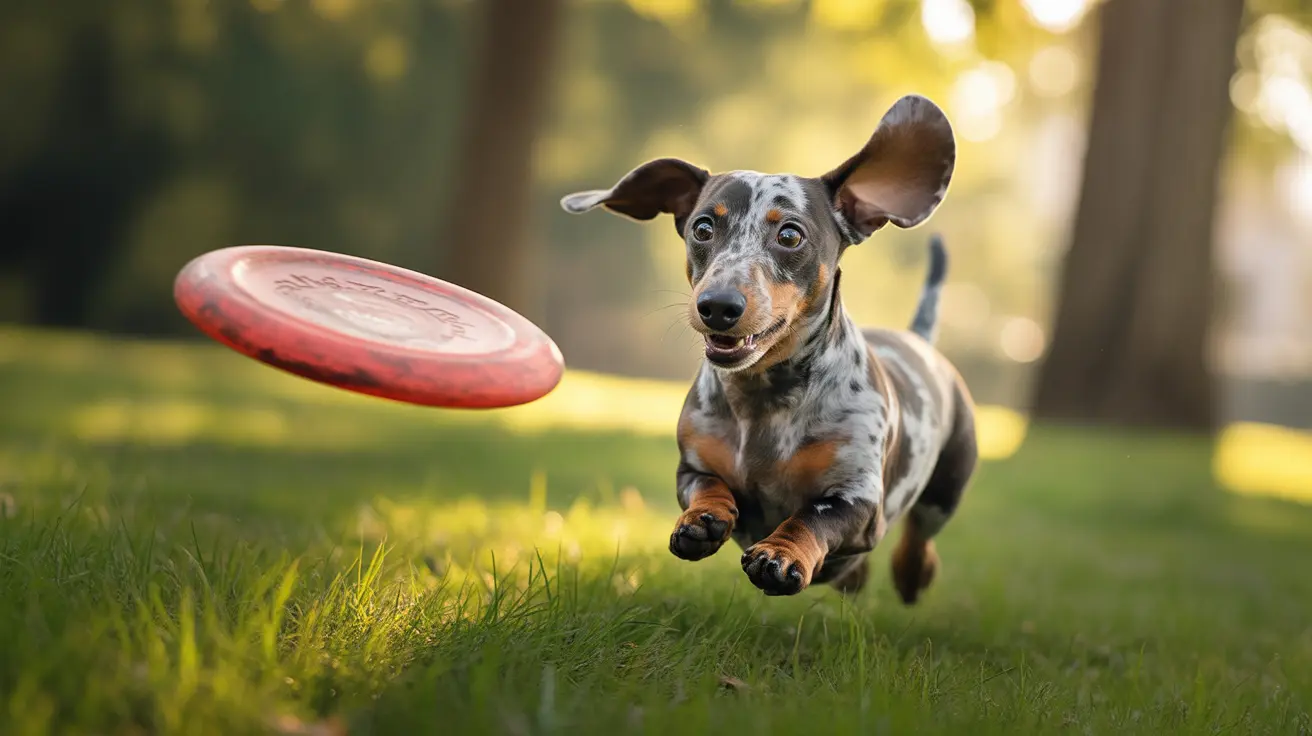Dachshunds are beloved for their distinctive long bodies and charming personalities, but their coat colors are equally fascinating. From rich reds to mysterious isabellas, these small but mighty dogs showcase an impressive array of colors and patterns that make each one unique.
Understanding dachshund colors isn't just about aesthetics - it's crucial knowledge for both potential owners and breeders, as certain color combinations can impact health and breeding decisions. Let's explore the wonderful world of dachshund coat colors, their genetics, and what you need to know about each variation.
The Basic Dachshund Color Palette
Dachshunds come in three fundamental base colors: red, black, and chocolate. Red is the most common and ranges from light golden to deep mahogany. These base colors serve as the foundation for various combinations and patterns that make dachshunds so visually diverse.
Standard Colors and Their Variations
- Red (with or without black overlay)
- Black and tan
- Chocolate and tan
- Cream
- Wild boar (primarily in wirehaired varieties)
Understanding Pattern Variations
Beyond solid colors, dachshunds display several distinct patterns that add to their unique appearance:
Dapple Pattern
The dapple pattern creates lighter patches or spots on the base color, similar to merle in other breeds. While beautiful, this pattern requires careful breeding consideration due to potential health risks when two dapple dogs are bred together.
Piebald and Brindle
Piebald dachshunds show white patches against their base color, while brindle displays stripe-like patterns across the coat. These patterns add striking visual interest without the health concerns associated with double dapple breeding.
Health Considerations in Color Variations
Some color variations come with specific health considerations that potential owners should be aware of:
Dilute Colors
Blue and isabella (dilute black and chocolate, respectively) can be prone to Color Dilution Alopecia (CDA), a condition causing hair loss and skin problems. Regular veterinary monitoring is essential for dogs with these coat colors.
Double Dapple Risks
Double dapple breeding can result in serious health issues, including vision and hearing problems. Responsible breeders avoid this combination to prevent these genetic complications.
Genetics Behind Dachshund Colors
The complexity of dachshund coloring comes from multiple gene pairs working together. These genetic combinations can produce over 200 possible variations when considering coat types and patterns. Understanding these genetics is crucial for ethical breeding practices.
Care Requirements for Different Colors
Different coat colors may require specific care approaches:
- Lighter colors may need more sun protection
- Dilute colors might require special skin care products
- All colors benefit from regular grooming to maintain coat health
Frequently Asked Questions
What are the primary coat colors and common patterns seen in Dachshunds?
The primary coat colors are red, black, and chocolate, with common patterns including dapple, piebald, and brindle. These can be combined with tan or cream points to create various combinations.
How do genetics determine the color variations in Dachshund coats?
Dachshund colors are determined by multiple gene pairs that control pigmentation, pattern distribution, and intensity. These genes work together to create the wide variety of colors and patterns we see in the breed.
What health risks are associated with dilute Dachshund colors like blue and Isabella?
Dilute colors (blue and isabella) can be prone to Color Dilution Alopecia (CDA), which can cause hair loss and skin problems. Regular veterinary check-ups are recommended for dogs with these colors.
Why is breeding double dapple Dachshunds considered unethical and risky?
Double dapple breeding significantly increases the risk of serious health issues, including deafness and vision problems. This combination can lead to congenital defects that affect the dog's quality of life.
How can responsible breeders use genetic testing to avoid color-related health problems in Dachshunds?
Responsible breeders use DNA testing to identify color genes and avoid problematic combinations. This helps prevent the production of puppies with color-related health issues and ensures healthier litters.
Understanding dachshund colors goes beyond appreciating their beauty - it's about ensuring the health and well-being of these beloved dogs for generations to come. Whether you're a potential owner or breeder, this knowledge helps make informed decisions about dachshund care and breeding practices.






